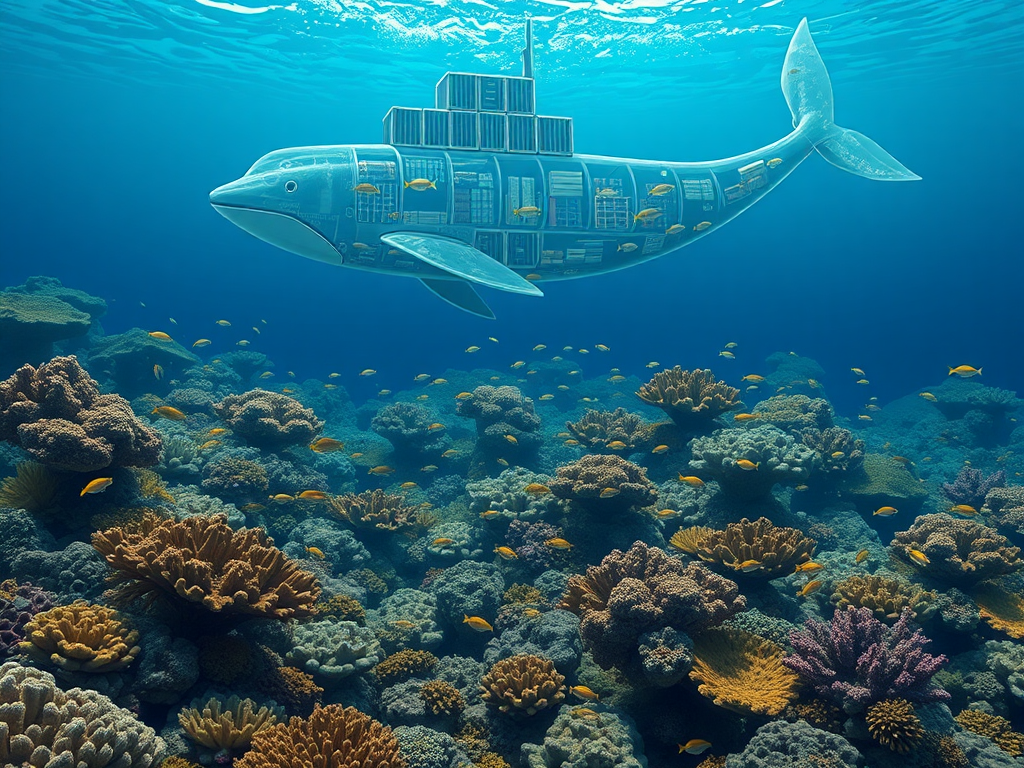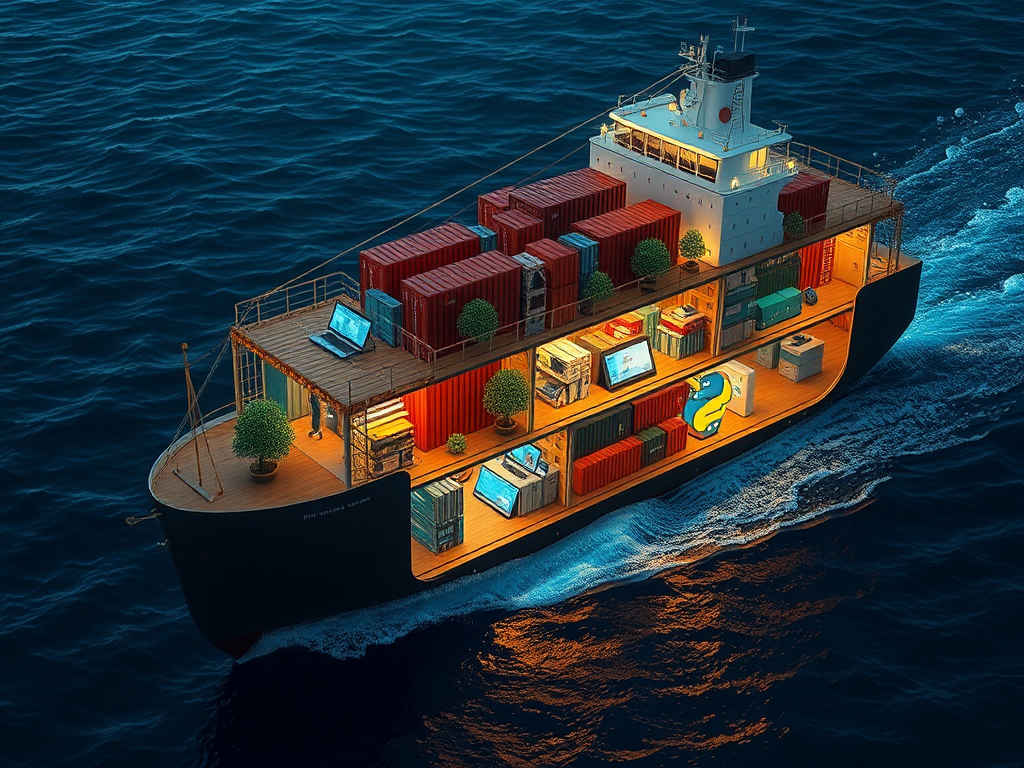Origin
Have you ever encountered situations where your Python program runs perfectly on your computer but encounters issues when deployed to other environments? Or when inconsistent environment configurations among team members prevent code from running smoothly? These are common pain points in Python development. Today, let's discuss how to solve these problems using containerization technology.
Concept
When it comes to containerization, many people's first reaction might be "this technology is complicated." Actually, it's not. We can understand it with a simple analogy: a container is like a standardized "shipping box" where we package the application and all its dependencies. No matter where this box is moved, the program inside can run consistently.
Do you know why we need containerization technology? Imagine you're developing a Python project using TensorFlow 2.0, but your colleague has version 1.0 installed. Without containerization, you'd need to spend time standardizing environment configurations. But with containers, this problem is easily solved: the environment configuration is in the container, the same for everyone.
Advantages
I think the biggest advantages of containerization technology are its consistency and portability. I remember working on a machine learning project where everything tested fine locally but kept throwing errors when deployed to the server. After using containerization, this problem was completely solved. Why? Because containers ensure consistency between development and production environments.
Let's look at some data: According to Docker's official statistics, after using containerization technology, development teams' deployment frequency increased 13 times, problem resolution speed improved 14 times, and environment configuration-related issues decreased by over 60%. These numbers clearly demonstrate the value of containerization technology.
Practice
After discussing so much theory, let's do some hands-on practice. First, I want to share a containerization template I frequently use. This template is especially suitable for Python web applications:
from flask import Flask
import numpy as np
app = Flask(__name__)
@app.route('/')
def hello():
# Use numpy to generate a random number to demonstrate normal dependency package operation
random_number = np.random.rand()
return f"Hello! Today's lucky number is {random_number}"
if __name__ == '__main__':
app.run(host='0.0.0.0', port=5000)
To containerize this application, we need to create a Dockerfile:
FROM python:3.9-slim
WORKDIR /app
COPY requirements.txt .
RUN pip install --no-cache-dir -r requirements.txt
COPY . .
CMD ["python", "app.py"]
Deployment
In the actual deployment process, I've found many people overlook some important details. For example, do you know why we use python:3.9-slim instead of the standard python:3.9 image? This is because the slim version is only about 1/3 the size of the standard version, significantly reducing deployment time and storage space.
In a large project, I once reduced deployment time from 15 minutes to 5 minutes by using the slim version of the base image. This optimization not only improved development efficiency but also reduced server costs.
Advanced
As project scale grows, a single container can no longer meet requirements. This is when container orchestration technology becomes necessary. I remember in an e-commerce project, we used Kubernetes to manage multiple Python service containers. Through setting up auto-scaling, the system could automatically adjust the number of containers based on traffic volume, easily handling peak traffic during Singles' Day.
Specifically, our configuration looked like this:
apiVersion: apps/v1
kind: Deployment
metadata:
name: python-app
spec:
replicas: 3
selector:
matchLabels:
app: python-app
template:
metadata:
labels:
app: python-app
spec:
containers:
- name: python-app
image: my-python-app:latest
resources:
requests:
memory: "64Mi"
cpu: "250m"
limits:
memory: "128Mi"
cpu: "500m"
Optimization
Speaking of container optimization, I have some unique insights. Many people think containerization is simply packaging applications, but optimization work is equally important. For example, do you know about multi-stage builds? They can significantly reduce the final image size.
In a data processing project, I used multi-stage building to optimize a 2GB image down to 300MB. This not only saved storage space but also improved container startup speed. The optimized Dockerfile looks like this:
FROM python:3.9 as builder
WORKDIR /app
COPY requirements.txt .
RUN pip install --user -r requirements.txt
FROM python:3.9-slim
WORKDIR /app
COPY --from=builder /root/.local/lib/python3.9/site-packages /root/.local/lib/python3.9/site-packages
COPY . .
CMD ["python", "app.py"]
Experience
Through practicing containerization, I've summarized some important experiences. First, pay attention to image version management. I've seen too much deployment chaos caused by not properly tagging image versions. I recommend using semantic version numbers, like v1.2.3, instead of simply using the latest tag.
Second, emphasize log management. Log management in containerized environments is very different from traditional environments. I recommend using a unified log collection solution, such as the ELK stack (Elasticsearch, Logstash, Kibana). This makes problem troubleshooting and performance analysis more convenient.
Future Outlook
Containerization technology is rapidly developing, with more exciting features coming. For example, WebAssembly containers are emerging, being more lightweight and faster to start than traditional containers. Statistics show that WebAssembly containers start up 100 times faster than traditional containers, which is good news for Python applications needing rapid scaling.
Additionally, the development of cloud-native technology is driving container technology evolution. Serverless container services allow us to focus more on code development rather than infrastructure management. This trend is changing how Python applications are developed and deployed.
Conclusion
Through this article, we've explored various aspects of Python application containerization. From basic concepts to practical deployment optimization, every step is important. Do you think containerization technology helps with your Python development work? Feel free to share your thoughts and experiences in the comments.
Remember, technology is constantly evolving, and it's important to maintain enthusiasm and curiosity for learning. Perhaps next time we can delve into the application of Python containerization in machine learning. What do you think?




 Previous
Previous 





